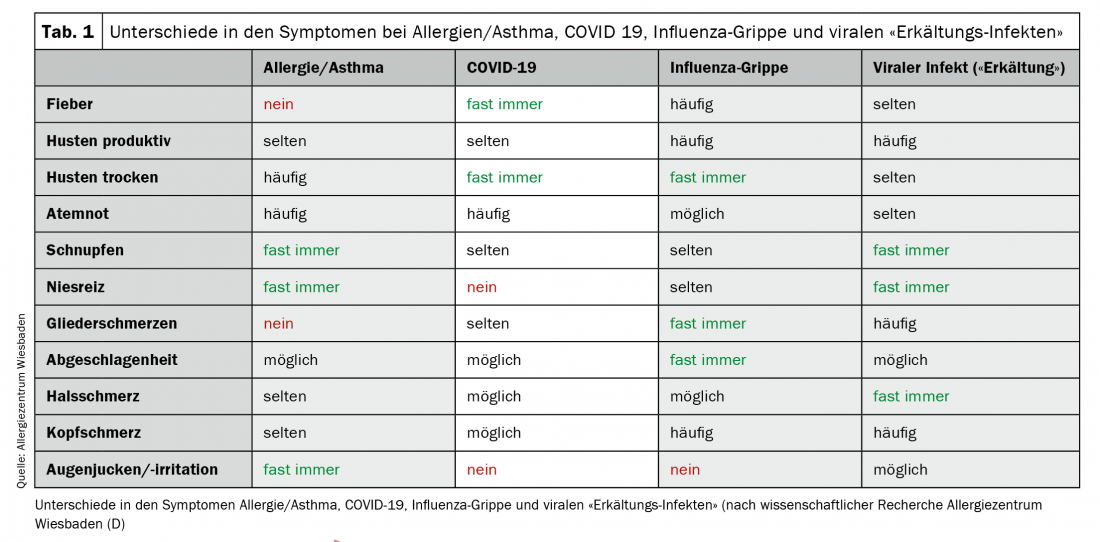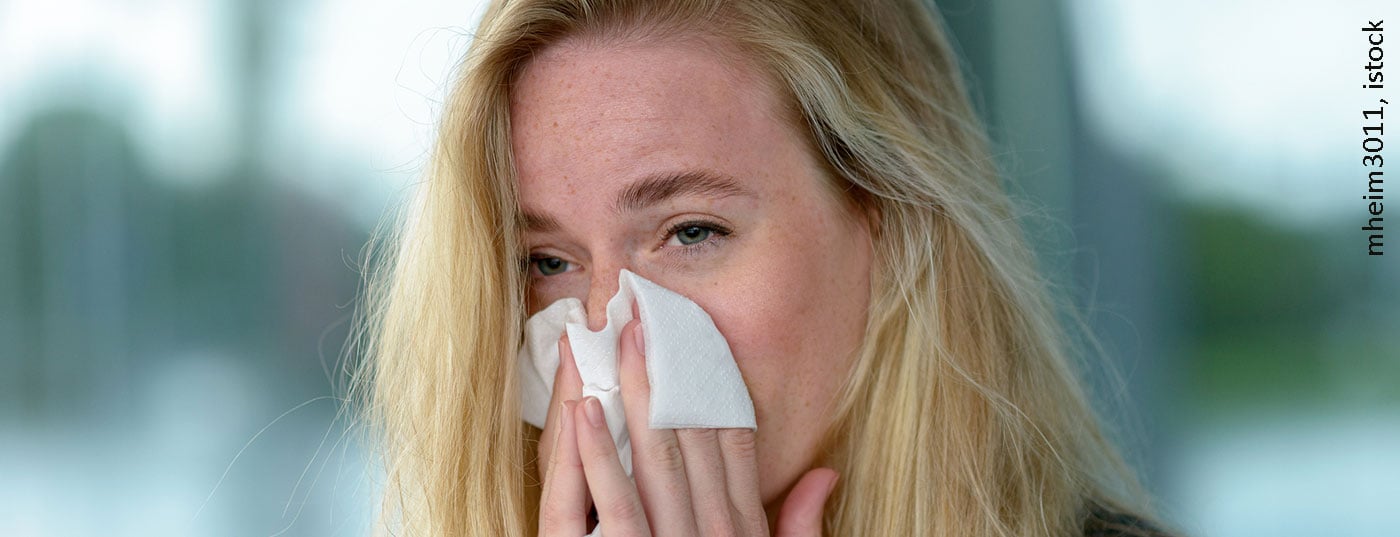Spring is here. In normal times, we would all enjoy nice weather, warmer temperatures, and nature blossoming. In the special times we are in, the matter is more complicated: the worse the weather, the fewer people in the streets and parks, the better. For allergy sufferers, spring also holds another danger.
In recent weeks, the pollen count of black alder and hazel has exploded – with the familiar and annually recurring consequences for pollen allergy sufferers who suffer as a result. However, hay fever, asthma, and inhalant allergies are secondary issues in the face of SARS-CoV-2 and COVID-19.
But for the health care system, the pollen season is an additional burden, because the typical symptoms of dry cough, shortness of breath and a runny nose are the same as for COVID-19. As a result, numerous allergy sufferers are worried and want to be tested. Even long-time inhalant allergy sufferers with known symptoms seem to be unsure of the cause of their coughing and sneezing attacks [1].
In fact, different inflammatory respiratory diseases, such as allergies and viral infections, can cause symptoms similar to COVID-19. “However, with closer assessment, a distinction can be made quite reliably, even for those affected,” explains Prof. Ludger Klimek, President of the Medical Association of German Allergists, Allergy Center Wiesbaden (D). While infections with the SARS-CoV-2 virus are characterized in most cases by fever and dry cough, allergy sufferers do not exhibit fever, but often itchy eye and nose mucous membranes, watery eyes, sneezing and rhinitis. Differences and similarities between respiratory allergies and various viral diseases are shown in Table 1.

The most important thing for patients with rhinitis, sinusitis or asthma, for example, is to be sure to take their prescribed medication consistently. This is because poorly controlled allergy sufferers have a significantly higher risk of suffering from a severe form of COVID-19.
Literature:
- Klimek L, Jakob T: Editorial: It’s spring and nobody goes anymore. AllergoJournal 2020; 2: 3.
InFo PNEUMOLOGY & ALLERGOLOGY 2020; 2(1): 5 (published 3/29/20, ahead of print).











